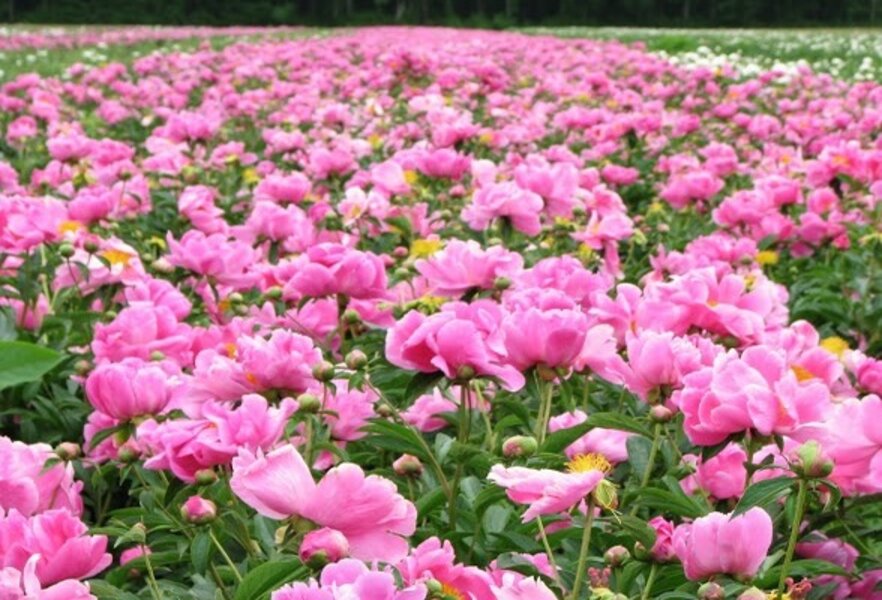Slow flower farming
Loading...
It was bound to happen. We have been living in a fast world for way too long -- fast food, fast friends, fast culture with 10 countries in 10 days. Thankfully, our fast pace is being replaced with what’s now referred to as the slow movement -- slow food, slow travel, slow gardening, and slow flowers.
With our digital world spinning faster and faster, we can finally slow down in areas where it matters most -- our community and lifestyle.
Terra Ceia Farms has been leading the slow flower and slow gardening movements for decades, but it was just thought of as a family farm.
Located in the eastern part of my state, in Pantego, N.C., Terra Ceia Farms is part of a small-town community, growing bulbs and flowers as it has been done for generations.
The Dutch arrive
In the 1910s, 35 Dutch families moved to Beaufort and Hyde Counties because of economic hardship in Europe from the time leading up to and between the First and Second World Wars. America provided them new opportunities.
This begs the question, doesn't it? Why did they end up in eastern North Carolina?
The most plausible explanation, according to Terra Ceia co-owner Carl Van Staalduinen, who manages the mail-order side of the business, is, “They learned of the climate and soil from Dutch engineers [and technology workers] who were employed to drain Lake Mattamuskeet.
The immigrants were mostly farmers; flower growers, dairy, and grain. The land was cheap (and heavily marketed), and for the flower grower, the climate was right for Easter tulip flower production.
”Most of them had either family or community connections to the same areas of Holland,” he adds.
From cut flowers to mail order
In 1938, Leerndert Van Staalduinen, with his wife and 10 kids, made their trek to America, first by way of a five-year stay in Ontario, Canada. It was there they waited for wartime immigration policies to relax so they could immigrate to the United States. “The economy in Holland and the impending Second World War precipitated the move,” Carl says of his grandfather's trip to the New World. Finally, in 1943, the family arrived in Pantego and began establishing Terra Ceia Farms.
As his friends and family learned through correspondence, Mr. Van Staalduinen found the eastern part of North Carolina to have ideal bulb-growing conditions. This area of North Carolina was originally known for its dense swampland, and all that decaying organic matter made for ideal growing conditions.
During the 1950s, Leernder Van Staalduinen built his business by selling bulb flowers along with cut flowers, mainly gladiolus, to the big-city markets up North, particularly the boroughs of New York.
When he became bedridden after a fall, he was concerned about the need to care for his family. That's when he got the idea to go through his contact list -- stacks of index cards with customer information -- and created a mailing list to launch Terra Ceia Farms’ mail-order bulb business, which thrives to this day. (Request a catalog by filling in the form here.)
After Leemder retired, his son, Cornelis, ran the business until he himself retired and turned the company over to his sons, Mark, Casey, and Carl. Today Terra Ceia is diversified farm with Mark managing the grain and corn acres, Casey handling the 300 acres of bulb and cut flower fields, and Carl running the mail-order catalog business.
Peonies at Whole Foods
In addition to offering bulbs, Terra Ceia Farms continues to operate as a cut-flower business. If you go to Whole Foods in May to buy peonies, you are, no doubt, taking home a bloom from Terra Ceia Farms. [See the two photos above; to reach the second picture, click on the arrow at the right base of the first one] Filling the niche from when the flower growers farther south finish their blooms, and before the farms in the Delmarva Peninsula begin theirs, the folks at Terra Ceia Farms fill the market void with their peonies -- lush, outrageous petals, carrying a light fragrance, and bringing joy to moms and brides and floral aficionados, alike.
I like the idea of slowing down and the concept of the slow movement. This year I plan to go slow down a bit myself, and take the time to smell the flowers.
If you go
Terra Ceia Farms, 3810 Terra Ceia Rd. (between Highway US 32 and Highway US 264), Pantego, NC; E-mail: info@TerraCeiaFarms.com
Showroom open Sept 15 through Jan. 15 and March 15 through June 15; Hours: Monday through Friday 10 a.m. to 4 p.m. and Saturday 10 a.m to 2 p.m.
For information on fund-raising with bulbs, contact Carl Van Staalduinen at 800-858-2852
-----
Helen Yoest blogs regularly about gardening at the Monitor. She lives in North Carolina and is the author of the book "Gardening With Confidence -- 50 Ways to Add Style for Personal Creativity." She's a garden writer, speaker, and garden coach. She's also a field editor for Better Homes and Gardens and Country Gardens magazines and serves on the board of advisers for the JC Raulston Arboretum. You can follow Helen on Twitter and Facebook. To read more of what she's written at the Monitor, click here.








